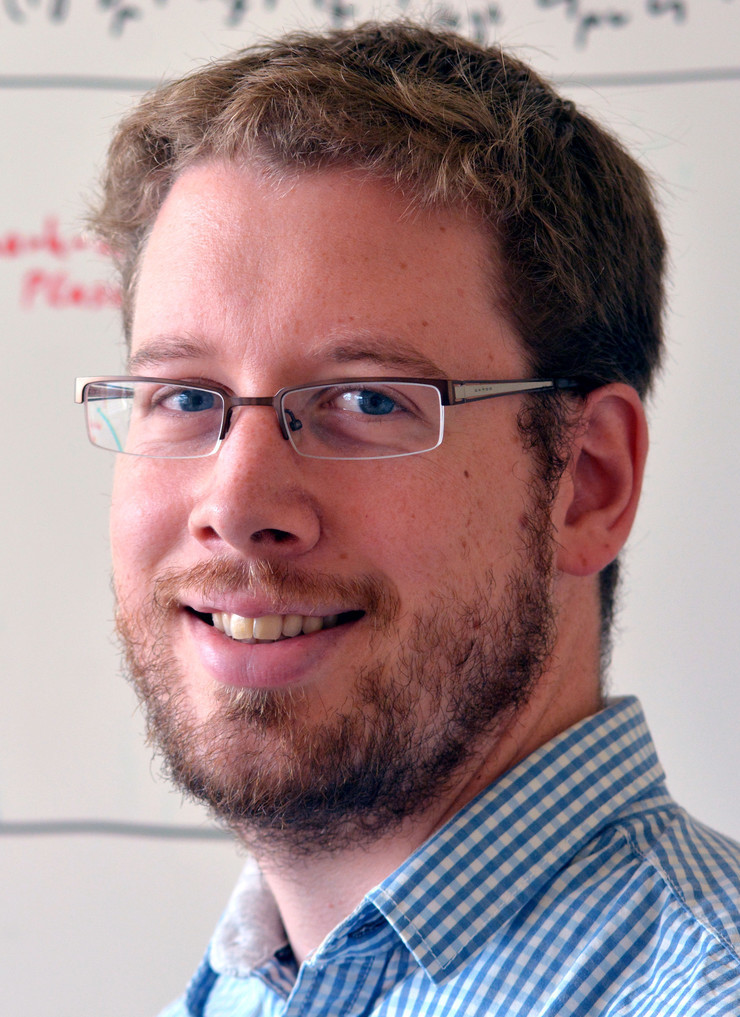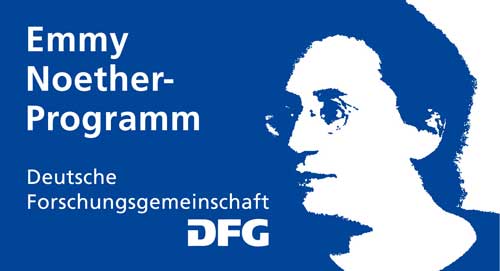
PD Dr. Wolfgang Unger
High Energy Physics GroupUniversität Bielefeld
wunger at physik.uni-bielefeld.de
Contact Information
 |
PD Dr. Wolfgang UngerHigh Energy Physics GroupUniversität Bielefeld wunger at physik.uni-bielefeld.deContact Information |

|
| ► Home | ► Research | ► Publications | ► Teaching | ► Personal Website |
|
Quantum Chromodynamics (QCD) is the fundamental theory of the strong interactions, which confine the quarks and gluons into baryons (e.g. protons and neutrons) and mesons.
At high temperatures similar to those in the early universe, a new state of QCD matter - the quark gluon plasma - exists.
This plasma has been observed in heavy ion collision experiments at RHIC and LHC.
However, it is an open question what the phase diagram looks like at non-zero baryon densities, and in particular whether there exists a chiral critical endpoint.
Since QCD is non-perturbative in this regime, lattice gauge theory is the method of choice. The phenomena such as quark confinement and spontaneous chiral symmetry breaking, as well as the phase structure at non-zero temperatures and densities can be investigated only via computer simulations from first principles.
The usual simulations are based on the fermion determinant.
However, due to the "sign problem", no direct simulations at non-zero baryon density can be performed.
Hence, also the question about the existence of the critical point can not be addressed directly. My main research interest is the thermodynamics of quantum chromodynamics (QCD), in particular via lattice QCD. I try to understand the QCD phase diagram, and the dependence of the chiral and deconfinement transition on the quark mass and the number of quark flavors. I am particulary interested in limits of QCD (like the chiral limit, the strong coupling limit at finite density, at the Roberge-Weiss point) where there exist various tri-critical points. I would like to understand whether and how the various tri-critical points are connected via tri-critcial lines. |

 |
|
From 2015 to 2020 I was an Emmy Noether fellow and lead the DFG-funded junior reseearch group "Lattice QCD at Strong Coupling".
The aim of the Emmy Noether-project was to measure the full QCD phase diagram in the μ-T-plane, based on a dual representation of lattice QCD
in terms of color singlets. This is obtained by integrating out all gauge degrees of freedom in a systematic ``strong coupling expansion''.
In the limit of infinite coupling, the pure gauge sector can be neglected such that the gauge links entering in the Dirac operator factorize and can be integrated out analytically.
The resulting partition function has a very mild sign problem, thus the full phase diagram can be obtained.
Now, it is important to go beyond the strong coupling limit to make qualitative statements about the phase structure away from the strong coupling limit.
For this purpose, more complicated gauge integrals have to be computed which enter the gauge corrections of higher order.
Within the research group the corresponding weights for a Hamiltonian formulation of lattice QCD shall be determined which then enter a quantum Monte Carlo algorithm.
With this approach, simulations on the dependence of the full μ-T phase diagram on the gauge coupling shall be performed. |
 |
Emmy Noether was a German Mathematician who worked on symmetries. She lived from 1882 to 1935, studied in Erlangen and spent most of her professional life in Göttingen. Since in the early 20th century, women were not allowed to become professors, she had to give her lectures in the name of David Hilbert, with whom she worked together. The situation changed after the fist world war, and in 1922 Emmy Noether was the first woman in Germany to receive a professorship. See here for her ► Biography. To physicists she is best known because of the Noether theorem and the Noether current/charge. The Noether theorem states that if a system has a continuous symmetry, then there is a corresponding charge which is conserved in time. The "Deutsche Forschungsgesellschaft" DFG has established in 1997 the Emmy Noether Program to give young scientists the opportunity to achieve independence in research at an early stage. The group is funded for 6 years. |

|
| The resesearch on strong coupling methods for lattice QCD has been also addressed within the CRC-TR 211 in subproject A02: "Lattice QCD at non-vanishing density", which is now in its second funding period. The aim of this project is to extend the dual formulation towards a regime to make contact to the 3-dim effective theory, another formulation of lattice QCD based on the strong coupling expansions. |

|
git clone https://YOUR_USERNAME@git.physik.uni-bielefeld.de/ariadne